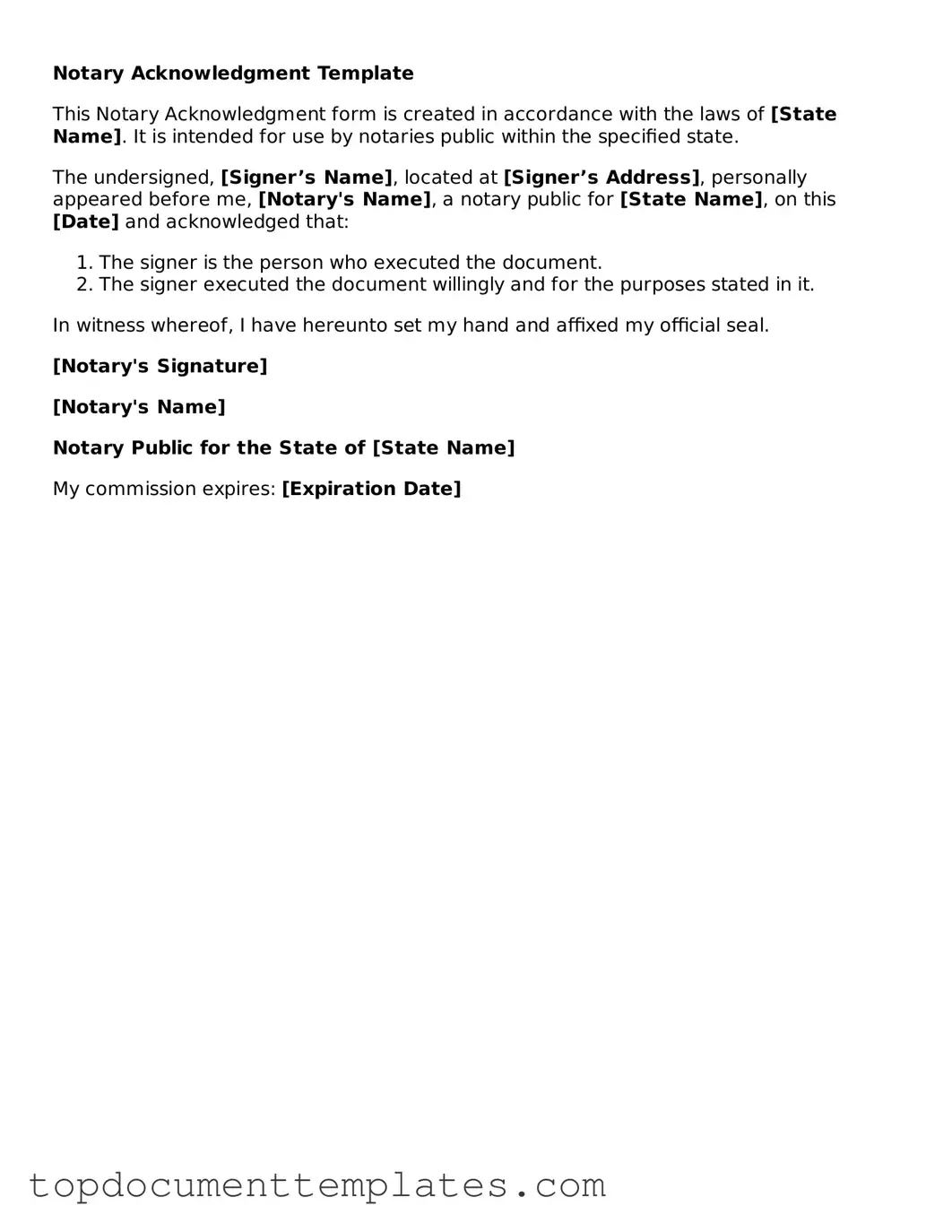Official Notary Acknowledgement Template
A Notary Acknowledgement form is a legal document used to verify the identity of individuals signing a document and to confirm that they did so willingly. This form provides essential proof that the signatures on a document are authentic, which can help prevent fraud. To ensure your documents are properly acknowledged, consider filling out the Notary Acknowledgement form by clicking the button below.
Open This Form
